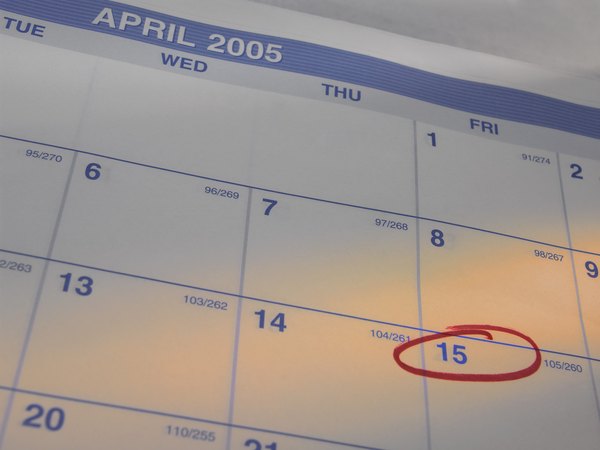What Happens If You Don't Pay Quarterly Tax Installments on Time?
Estimated taxes are due four times a year.
Jupiterimages/liquidlibrary/Getty Images
If you owe more in tax than is withheld from your paychecks, or you're entirely self-employed, you'll often need to make quarterly estimated tax payments to the Internal Revenue Service to cover your taxes. IRS estimated tax payments are due by a particular date on each year, and many states require estimated tax as well if you are likely to owe tax.
Tip
If you don't pay your estimated tax by the right quarterly tax dates, you can owe an additional penalty to the IRS. The penalty for not paying quarterly taxes varies based on how much you owe and when you finally pay.
IRS Estimated Tax Requirements and Penalties
If you know you are likely to owe more money on your taxes than is withheld from your paychecks, whether because of self-employment income, because of profit from investments or some other extra income, it's generally worth figuring out if you need to pay estimated tax.
Generally, if you expect to owe at least $1,000 after withholding and tax credits, you should pay federal estimated tax. If the total of your withholding and estimated tax payments cover at least 90 percent of the tax you owe for a year, or 100 percent of the tax for the previous year, you shouldn't owe a penalty. Different states with income tax also have different rules about estimated tax, when it's due and who must pay.
Computing and Paying Estimated Tax
Depending on your circumstances, you might pay the same amount in each quarter or more in certain quarters if you've made substantially more. You can compute and pay your estimated tax using IRS Form 1040-ES. You can either pay by mail with a check or money order or pay over the phone or online using a bank account or even a credit or debit card, though fees usually apply for using a card. Quarterly tax dates generally fall in the middle of April, June, September and January each year, though the exact dates can vary based on weekends and holidays, so it's a good idea to check with the IRS to see exactly when your payments are due.
If you pay too much in estimated tax and withholdings combined, you'll get that money back as a tax refund at the end of the year. If you know you will be paying estimated tax, you can also have a refund credited toward your next year's tax bill to reduce the amount you'll have to pay. If you think you may owe a tax underpayment penalty for not paying enough estimated tax, you can use IRS Form 2210 to compute your penalty.
Exceptions to the IRS Estimated Tax Rules
If you fail to pay estimated tax because of a disaster or another similar event, you can ask the IRS to waive the penalty. You can also ask for a waiver of the penalty if you became disabled or retired after reaching age 62 in either the year you'd owe the estimated tax or the previous year. Farmers and fishermen are also subject to special estimated tax rules.
2019 and 2018 Tax Situations
Estimated taxes for 2019 are due on April 15, 2019; June 17, 2019; Sept. 16, 2019 and Jan. 15, 2020. Because tax laws changed for tax year 2018 because of the Tax Cuts and Jobs Act, it may be a good idea to review your tax expectations to make sure you don't pay too much or, in particular, too little tax.
For the 2018 tax year, estimated tax payments were due April 17, 2018; June 15, 2018; Sept. 17, 2018 and Jan. 15, 2019.
References
- Internal Revenue Service: Estimated Taxes
- Internal Revenue Service: Form 2210 -- Underpayment of Estimated Tax By Individuals, Estates and Trusts
- IRS: Topic Number 306 - Penalty for Underpayment of Estimated Tax
- Yale University: 2018 Federal Quarterly Estimated Tax Payments
- IRS: 2019 Form 1040-ES
- Forbes: IRS Releases New Estimated Tax Forms for Freelancers & Taxpayers Not Subject to Withholding
Writer Bio
Steven Melendez is an independent journalist with a background in technology and business. He has written for a variety of business publications including Fast Company, the Wall Street Journal, Innovation Leader and Ad Age. He was awarded the Knight Foundation scholarship to Northwestern University's Medill School of Journalism.

